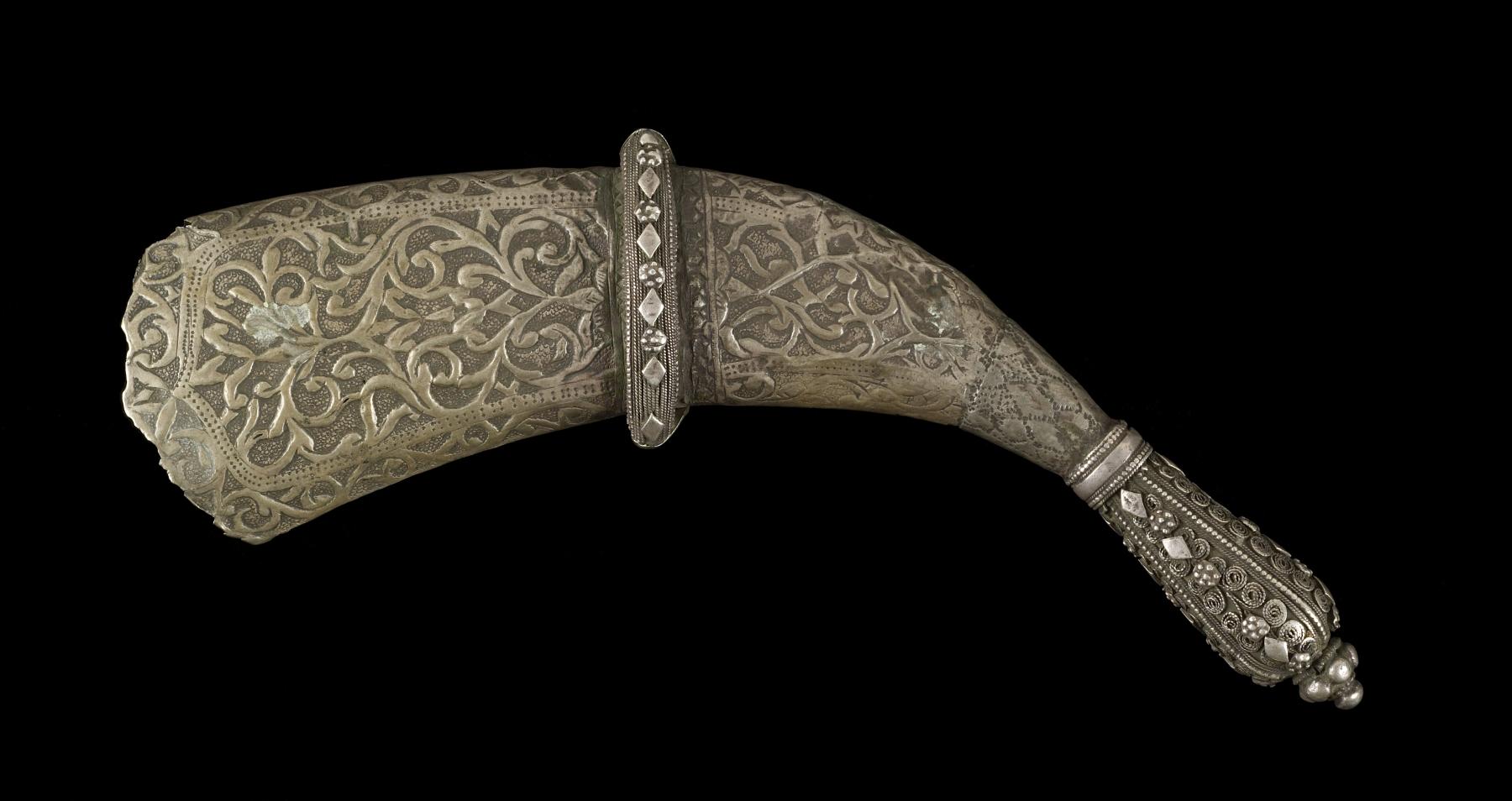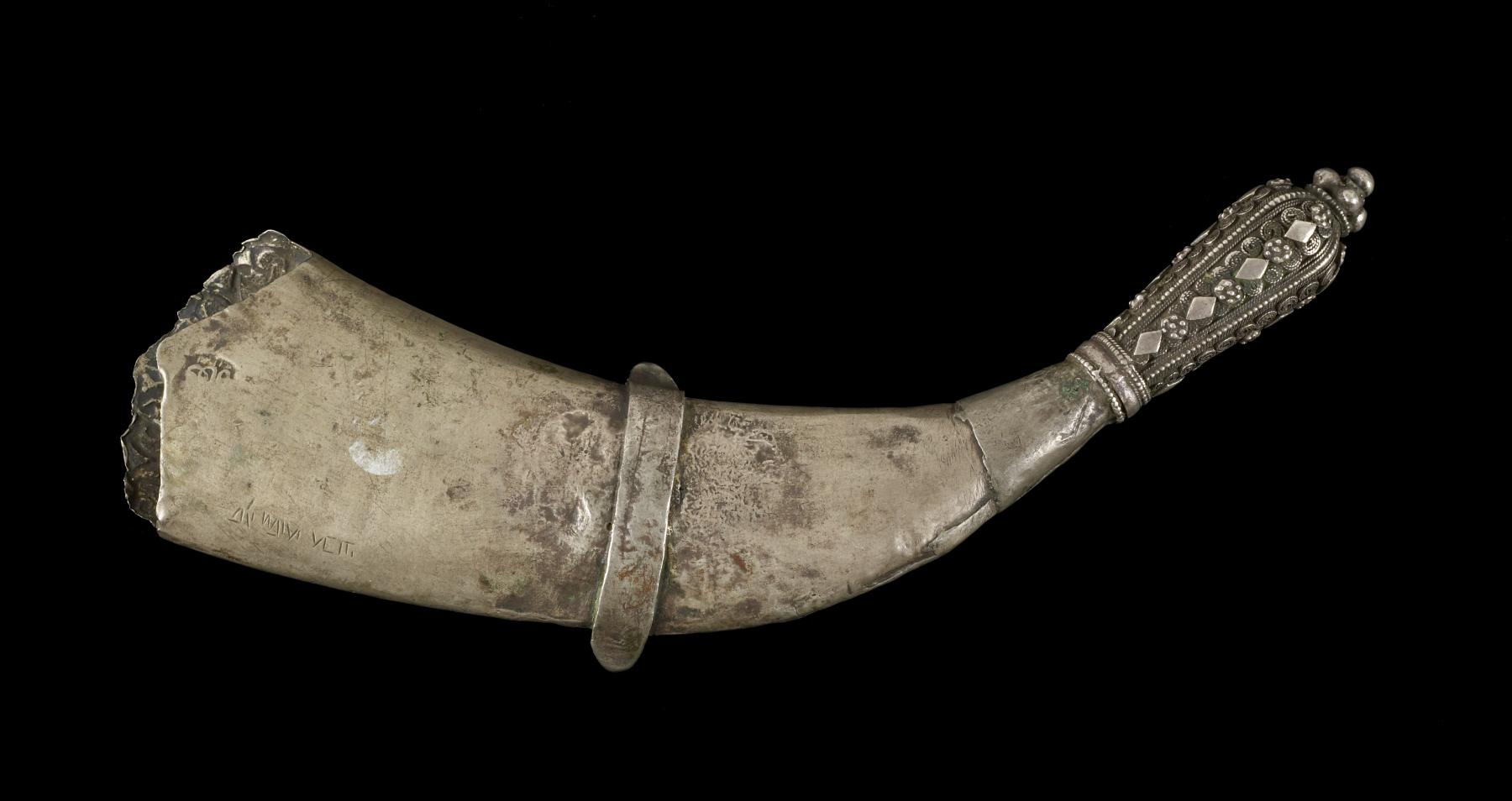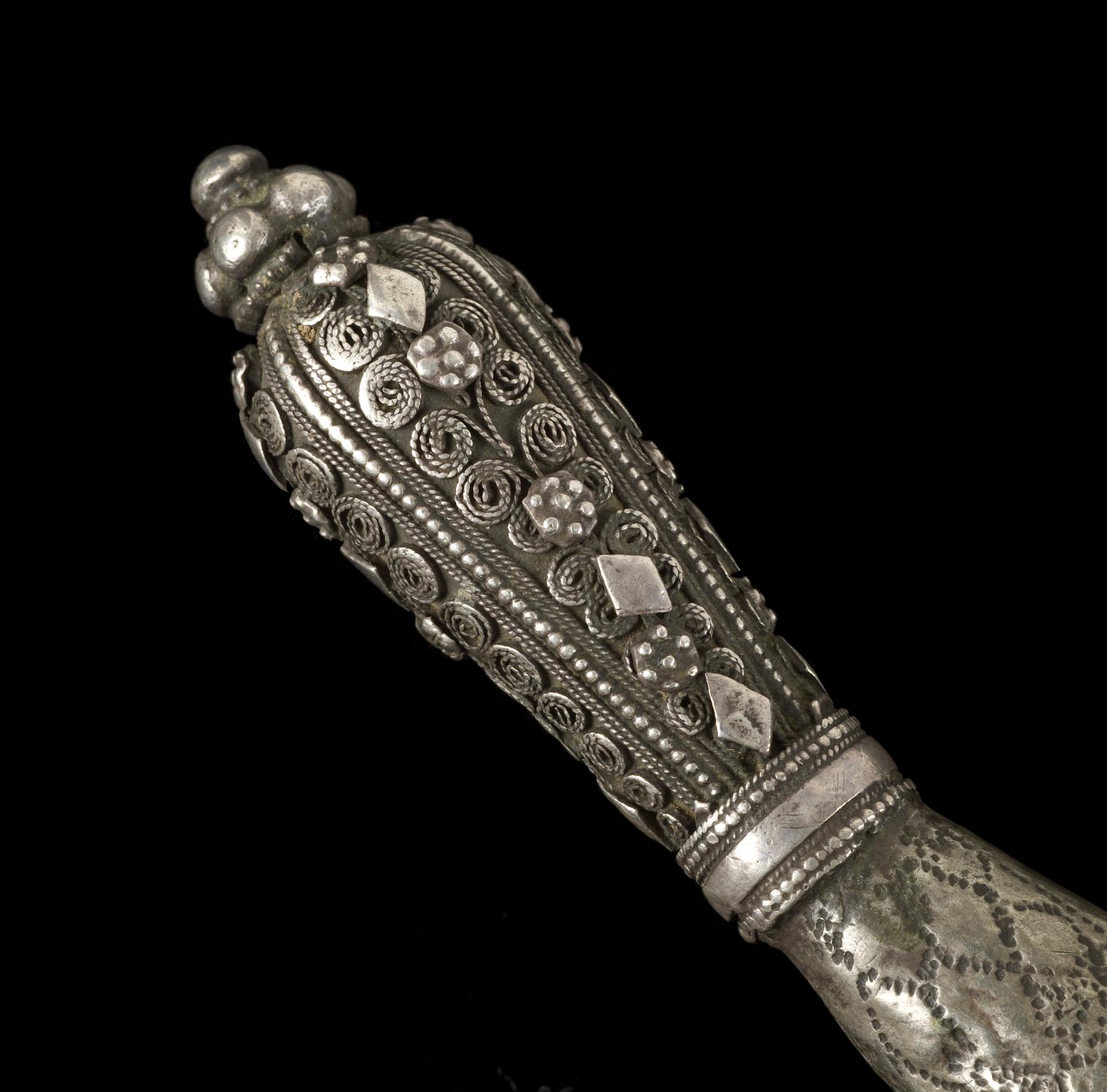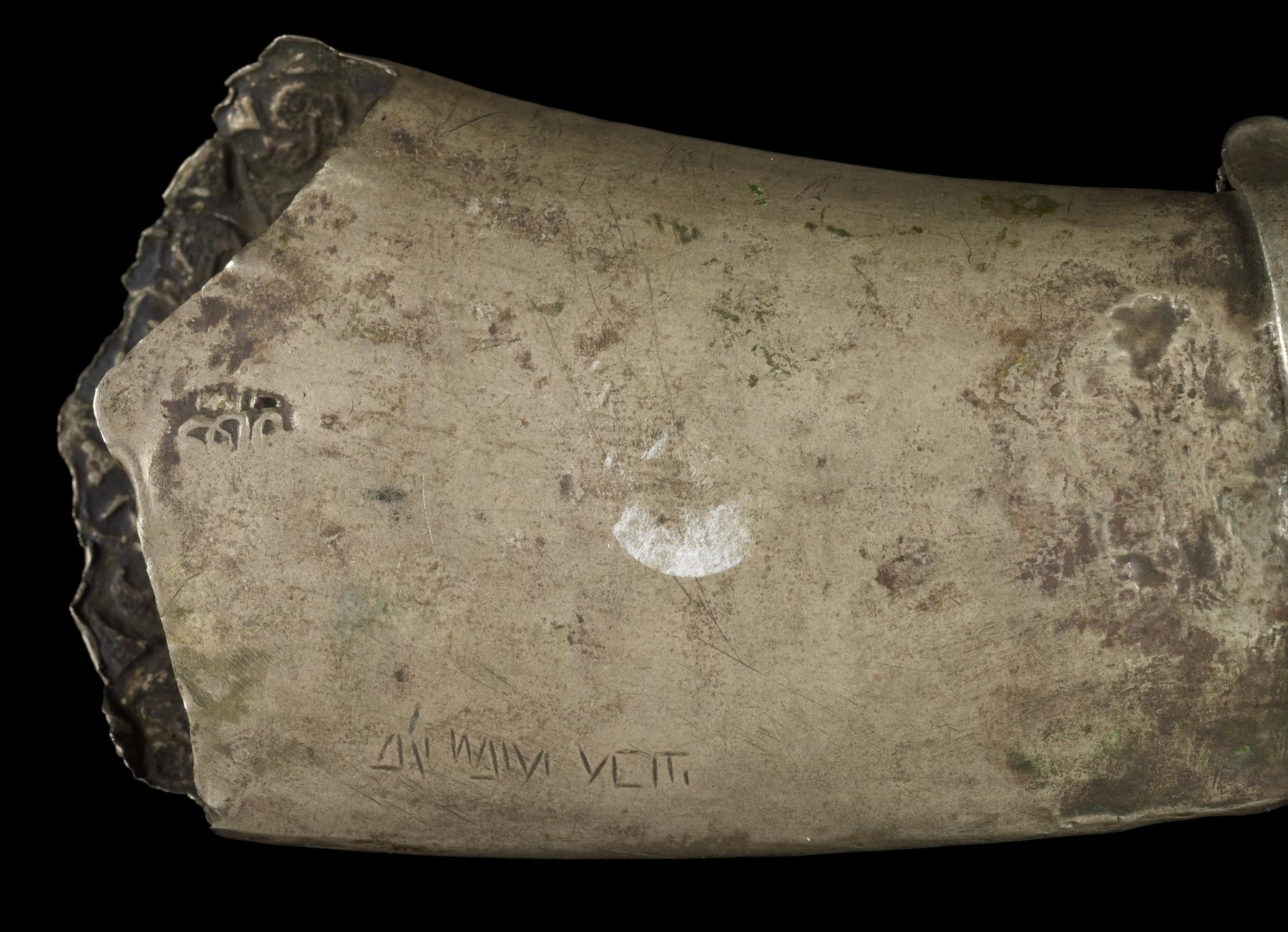Sheath of a Thuma
The sheath is entirely decorated at its drop-shaped tip with spirals, rosettes, and rhombic appliqués. The upper part displays arabesque leaves and tendrils and the buckle as well as lower tip is decorated with rhombic and rosette-shaped appliqués. The back of the upper part is blank. Thuma daggers were produced only for the Zaydi Muslim elite. They were very precious, and kept in families for generations.
On the back of the sheath is an Arabic stamp with the name of the ruler and a date: al-Mansur 115x. The stamp belongs to Imam al-Mansur al-Husayn, who lived from AH 1139 to 1161 (AD 1775-1809).
An engraved inscription in Hebrew names the silversmith: H(arun) Kasil. It is possible that H(arun) Kasil was the same Kasil who lived also under al-Mahdi al-"Abbas, see Walters 57.2319.
Inscription
Provenance
Provenance (from the French provenir, 'to come from/forth') is the chronology of the ownership, custody, or location of a historical object. Learn more about provenance at the Walters.
Mr. Derek Content and Mr. Benjamin Zucker [Zucker Family Trust] London and New York, by purchase; Walters Art Museum, 2010, by gift.
Exhibitions
| 2016-2017 | Treasures of Yemenite Silverwork. The Israel Museum, Jerusalem, Jerusalem. |
| 2012-2013 | Diadem and Dagger: Jewish Artisans of Yemen. The Walters Art Museum, Baltimore. |
Geographies
Yemen, Taizz (Place of Origin)
Measurements
L: 9 7/16 x W: 2 3/4 in. (24 x 7 cm)
Credit Line
Joint gift to the Walters Art Museum, Baltimore, and the Israel Museum, Jerusalem, by Mr. Derek Content and Mr. Benjamin Zucker in honor of Mrs. Amanda Content and Mrs. Barbara Zucker, 2010
Location in Museum
Not on view
Accession Number
In libraries, galleries, museums, and archives, an accession number is a unique identifier assigned to each object in the collection.
In libraries, galleries, museums, and archives, an accession number is a unique identifier assigned to each object in the collection.
51.1449








